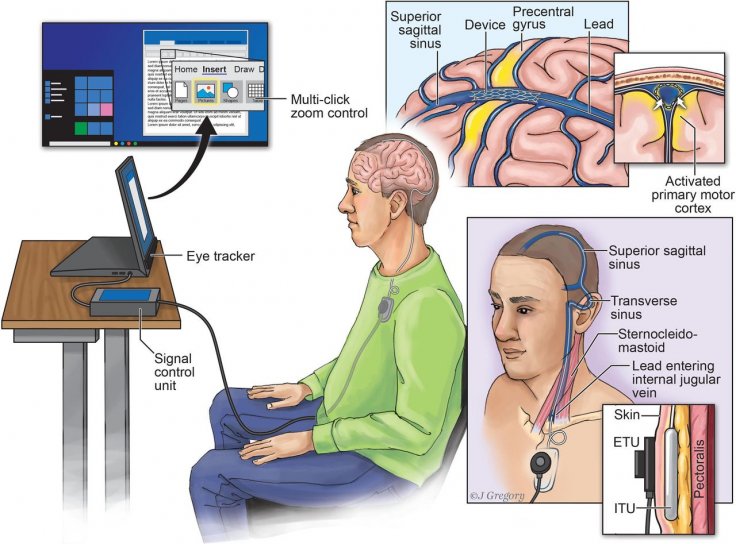For a long time, scientists have flirted with the idea of implanting a device in the brain that will be able to communicate with a computer. However, the process to turn a person into a cyborg involves brain surgery — something, not all are comfortable with. Like all invasive procedures, brain surgery comes with risks. But a group of scientists from the U.S. and Australia wants to solve the problem by eliminating brain surgery and introducing a minimally invasive procedure.
Many scientists have proposed an implant in patients with severe paralysis. That way, they can communicate with a computer interface for others to understand. It will also help the patients get back some functionalities especially when they are not able to speak or move. Elon Musk's Neuralink is also aimed at solving the same problem but by implanting a chip directly on the brain cells. He demonstrated its limited capability using pigs.
How Does the Stent Work?
While Musk's brain-machine interface device is tiny, it will still need invasive surgery. But the scientists from Synchron has a different approach. They inserted a stent — a plastic or metal tube — through the vein that carries blood to the brain. The springy stent with wires and mounted electrodes were inserted through the jugular vein in the throat to the primary motor cortex of the brain.

As the stent reached the part, it expanded to expose the electrodes that could pick up brain signals. So, when the brain sent a signal to move, the computer picked it up wirelessly through an infrared transmitter inserted in the chest.
In the research paper which was published in the Journal of NeuroInterventional Surgery, the scientists explained that using their device two persons with Lou Gehrig's disease (ALS, a neurological disorder that causes muscle weakness and affects motor functionality), were able to send text messages, online shopping and even manage personal finances.
"Self-expanding stent technology has been well demonstrated in both cardiac and neurological applications to treat other diseases. We just use that feature and put electrodes on top of the stent. It's fully implantable. Patients go home in a couple of days. And it's plug-and-play," interventional neurologist Dr Thomas Oxley, who is also the CEO of Synchron, told Wired. They dubbed the device stentrode.
Does It Work?
After the procedure, the two test subjects went home without showing any side-effects. But they could not immediately perform the tasks the scientists intended them to. While the stentrode was able to intercept brain signals, it took a few days of practice to teach the machine-learning algorithm. Eventually, the artificial-intelligent system could interpret brain signals, helping the test patients move a cursor and click with just thoughts.

The stentrode, for now, can only intercept one-bit information, meaning understanding telepathic mouse click or the absence of it. While it doesn't sound extraordinary, it can be of great help for patients with ALS. It's functioning and with further research and funding, it could solve bigger problems in patients with brain and neurological disorders. The device also hasn't been approved by the Food and Drug Administration (FDA) for wide use.
"There's been a lot of talk about data and channels, and really what should matter is, have you delivered a life-changing product to the patient? Just with a handful of outputs restored to the patient that they're in control of, we've got them controlling Windows 10," Oxley said.
Possible Issues
Unlike Musk's Neuralink or other devices that directly intercept signals directly from the brain tissues, stentrode depends on the cells of the blood vessel. That results in loss of signal or lowering the quality of the signal.
"The core technology and the core idea are super cool, but given where they're accessing the signals from, my expectation would be that this is a relatively low-fidelity signal relative to other brain-machine interface strategies," Vikash Gilja, the head of the Translational Neural Engineering Lab at the University of California San Diego, said.









